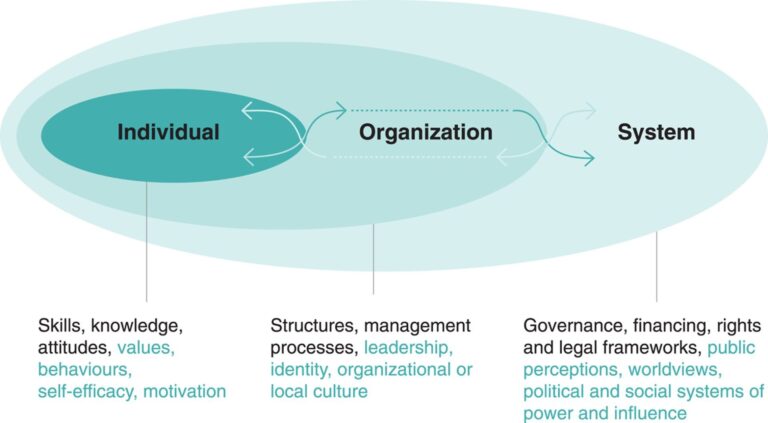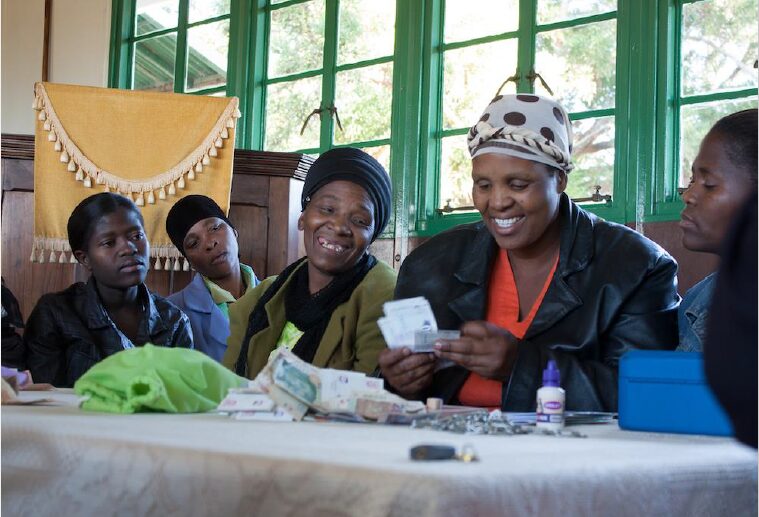Everyone working in development has heard the terms “capacity-building” or “capacity-strengthening” tossed around in meetings. But what do these terms mean and why are they important? Khulisa’s evaluators provide some answers.
The United Nations defines capacity-strengthening as “the process of developing and strengthening the skills, instincts, abilities, processes, and resources that organizations and communities need to survive, adapt, and thrive in a fast-changing world”.
While capacity-strengthening is essential for every organization, it is particularly important in public-sector institutions and programs, where capacity (individual, organizational, or system) can make the difference between success and failure of a program. Capacity-strengthening is also a huge priority for in-country program evaluations, where, historically, project funders often overlooked the role of national and local governments in improving the effectiveness of programs.
As a company providing monitoring, evaluation, research, and learning (MERL) services in the developing world, Khulisa has accumulated a lot of experience with capacity-strengthening activities of public sector projects, including the Measures for Countering Trafficking in Persons (MCTIP) in South Africa study, the Practical Education Research for Optimal Reading and Management: Analyze, Collaborate, Evaluate (PERFORMANCE) project in South Africa, and the Scaling Up Nutrition Learning and Evaluation (SUN LE) project in Zambia. Khulisa evaluators who work on these projects recently sat down to share their thoughts and insights on capacity-strengthening.
“In the past,” explained Khulisa evaluator Thembi Mahlangu, “NGOs would come in, do something, and then leave, and the products that they produced just sit there because no one knows how to implement them. And because there was no proper handover to the [relevant] government department, there was no sustainability of the work done.”
Fortunately, this model has begun to change. “In the last 10 years there’s been a renewed interest in capacitating governments to better govern their work – whether it’s providing education services, health services, water and sanitation services – whatever the government is supposed to do,” said Mary Pat Selvaggio, Director of Khulisa’s Health Division.
Strengthening Capacity for Sustainability
“One reason why capacity-strengthening for government is so important now is because a lot of the funding for monitoring, evaluation, research, and learning [MERL] is still coming from external international donors,” explained Khulisa evaluator Jesse Webb. “But for the sustainability of the work and usefulness for the country [where it’s conducted], it has to be integrated into actually strengthening government systems.”
A one-time intervention in a struggling program – like an infusion of medical supplies, food, or consultation from outside experts – might have a positive impact in the short term. But long-term sustainability requires real partnership with local institutions, particularly those responsible for policy-setting and implementation.
“Issues of sustainability are very important when we think about capacity-strengthening in the public sector,” said Thembi. “It is important to consider when doing government capacity-strengthening: How is that going to help the government sector? Is it going to add any value to what they are currently doing?”
Thembi worked as a stakeholder manager on the MCTIP project, and her sole responsibility for many months was to engage and liaise with the multiple government departments involved in the program. “What is important when you’re initiating relationships or a stakeholder engagement is making sure [the stakeholders] understand your program – that they see it aligning to their strategic plans and to their annual performance plans and how it can improve aspects of their program. It needs to be relevant to them for them to buy into it.”
The Importance of Understanding and Using Data
One Khulisa capacity-strengthening priority is to work closely with our public-sector partners in-country – who are usually implementing the programs that Khulisa is evaluating – to ensure they understand and use the data we collect.
“It’s all about translating the information, data, and evidence into programmatic action,” said Mary Pat. “You’ve got this information…What can be done differently, what can be improved, what can be tweaked so that the government program is more effective in reaching its objectives? And that’s a tricky step…There is an element of change management that has to be incorporated into the capacity-strengthening approach.”
Matthews Onyango, Chief of Party for the SUN LE project, shared Khulisa’s experience with this type of capacity-strengthening in Zambia. “When we started in 2019, we trained the district managers and provincial managers on how to use data for decisions,” said Matthews. “A number of districts took that [training], and we have seen that the work plans in most of the districts are now being informed with data…[The district and provincial managers] are able to identify what is working, what is not working, what can be improved. So that has really worked in most of the districts.”
Khulisa helps coordinate a national nutrition conference in Zambia every two years, in which capacity-strengthening is a big focus. “We sit down, look at the evidence, discuss, and then give [national or sub-national-level government leaders] an opportunity to discuss how they see those results being used to improve their programs,” said Matthews. “Participants come with specific action points and try to incorporate those into policies and the work plan for the subsequent year.”
Strengthening Internal Systems and Processes
Capacity-building is not only about training individuals. The bi-annual performance assessment that Khulisa conducts for SUN LE looks more broadly at the systems and organizational structures within the Zambian government and how the systems and structures can be capacitated to provide better services.
“The performance assessment is collecting evidence on the capacity gaps that exist within the program – looking at the program from the government side, the service delivery side, and looking at the capacity in terms of whether the policies exist, whether there’s collaboration within the government and outside the government, and to looking at how are services delivered,” said Matthews. “And then specific decisions are made on how to improve particular aspects of the capacity to deliver services. We don’t just show where things have improved; we also show where gaps are. And then specific decisions are made on how to improve where the gaps are.”
Capacity-Strengthening for the Long-Term
The most prevalent theme in this discussion was the importance of including capacity-strengthening into projects – especially long-term, multi-year projects – from the start, and building long-term relationships with the government counterparts.
“Khulisa has expertise in building long-term, productive relationships with government departments,” said Jesse. “And the relationship between the MERL firm and the government department is extremely valuable.”



